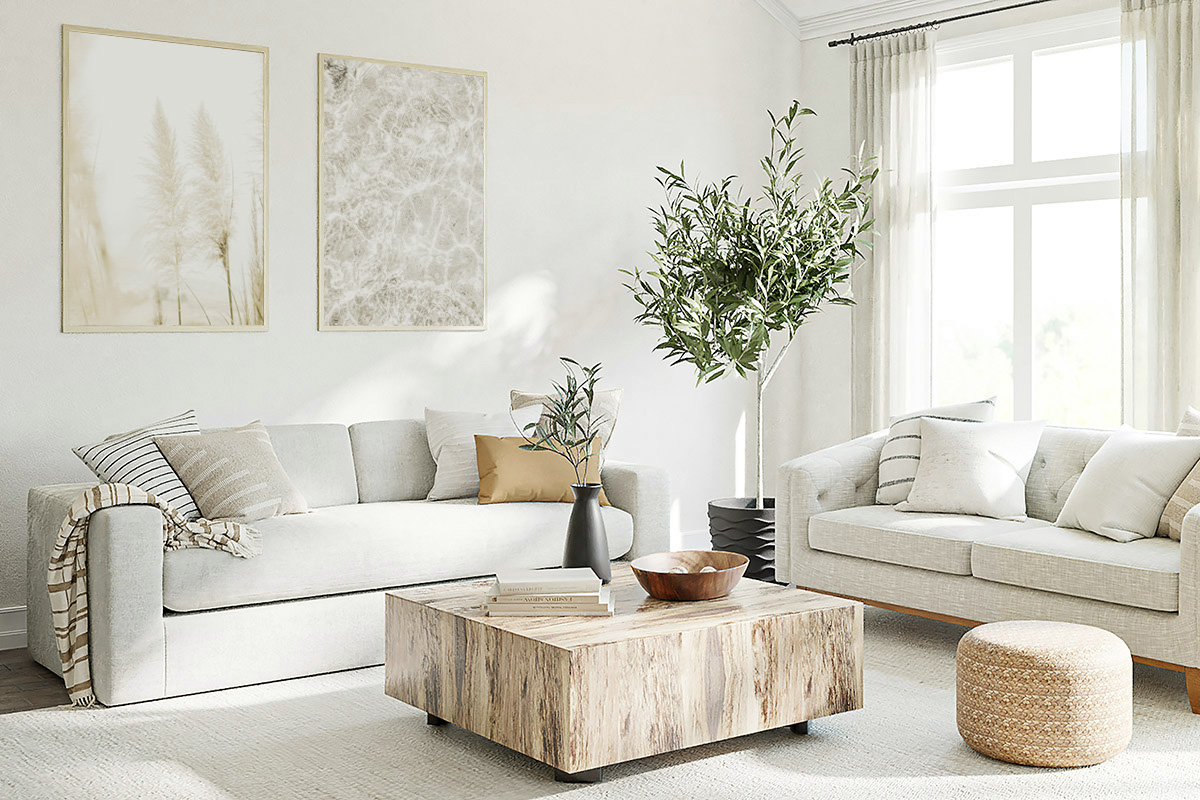How to Create a Cozy and Simple Home Without the Empty Feel
Let’s be real, there’s a fine line between minimalist and “Oops, did I accidentally sell all my furniture?” Minimalism doesn’t have to mean an echo chamber of bare walls and a single, lonely chair. Done right, a minimalist home feels serene, balanced, and stylish, without looking like you just moved in. So, how do you make a home feel minimalist without turning it into a furniture desert? Here’s how to nail that look (without actually using nails, because minimalist life hack: command strips are your new BFF).
Focus on Quality Over Quantity
Minimalism is all about keeping what truly matters, and that includes your furniture and decor. Instead of cramming your space with every trendy item from the latest design catalog, pick a few high-quality, standout pieces that you love. Think of your home as an art gallery, and those items as the carefully curated exhibits. A sleek mid-century chair, a gorgeous wooden coffee table, or a single statement lamp can be the hero of your living room.
Plus, fewer things mean fewer things to dust. And who doesn’t love that?
Negative Space Is Your Friend, Not Your Foe
In the world of minimalism, empty space is like that quiet friend who doesn’t say much but makes everyone feel calm. Negative space (a.k.a. the space between and around objects) is key to making a room feel light and uncluttered. Don’t feel the need to fill every nook and cranny with stuff. Embrace the emptiness – strategically.
For example, a bare wall can be a moment of calm between busier areas of your home. Or you could hang a single large piece of art instead of a gallery wall, giving the eye a place to rest. The beauty of minimalism is that less can make a bigger impact.
Mix Textures to Add Warmth
If your space feels too stark, it’s probably because everything looks too similar. The key to avoiding a minimalist home that feels cold is mixing textures. Neutral tones and clean lines are great, but if everything is too smooth and uniform, your home will start to resemble a waiting room (and not the fun kind).
Throw in some variety: a cozy knit blanket draped over a sleek modern couch, a woven rug under a modern coffee table, or linen curtains paired with a metal floor lamp. The contrast between materials adds visual interest and prevents your home from feeling like a monochromatic icebox.
Go Green (Literally)
Plants are a minimalist’s best friend. Not only do they purify the air and make you look like you’ve got your life together, but they also add life and warmth to a space. A single large plant in a ceramic pot can be a stunning focal point without overwhelming the room.
If you’re worried about keeping greenery alive (I see you, plant killers), start with low-maintenance options like snake plants, succulents, or pothos. Bonus: they give off “I’m a responsible adult” vibes without requiring too much actual responsibility.
Add Functionality to Your Decor
Minimalism is all about purpose, so why not make your decor functional? Think less “frivolous knickknack” and more “items that earn their place.” Shelves aren’t just for displaying random things—they can be used for stylish storage. Baskets can hide clutter while looking chic. Even lighting can serve double duty; a beautifully designed floor lamp can add both style and practicality to your space.
Multi-purpose pieces help keep your space free of unnecessary items, while still allowing you to maintain a lived-in, cozy vibe.
Be Thoughtful with Color
You don’t need to drown your home in stark white to achieve a minimalist look. Sure, white is great, it’s clean, fresh, and makes spaces feel bigger. But if everything in your home is white, you might feel like you’re living in a cloud (and not the fluffy, comfy kind).
Add a bit of color to break up the monotony. Stick to a muted, cohesive palette like soft grays, beiges, or earthy tones. Or if you’re feeling bold, throw in an accent color – just make sure it complements the neutral base. A little color goes a long way in bringing warmth and depth to a minimalist space without overwhelming it.
Use Statement Art Wisely
In minimalism, art is less about filling space and more about making an impact. Instead of plastering every wall with prints, consider selecting one or two statement pieces that really resonate with you. A large-scale piece over a sofa or bed can add character to your space without creating visual clutter.
Just don’t overdo it – remember, the point is to keep things simple. Too many frames on a wall, and you’ve suddenly veered into gallery territory. And unless you’re hosting tours in your home, that’s probably not what you’re going for.
Creating a minimalist home that feels cozy and complete is all about balance. It’s about choosing what matters, mixing in some texture, and letting negative space do its thing. So, embrace the “less is more” philosophy, but remember, less doesn’t have to mean empty.


No responses yet